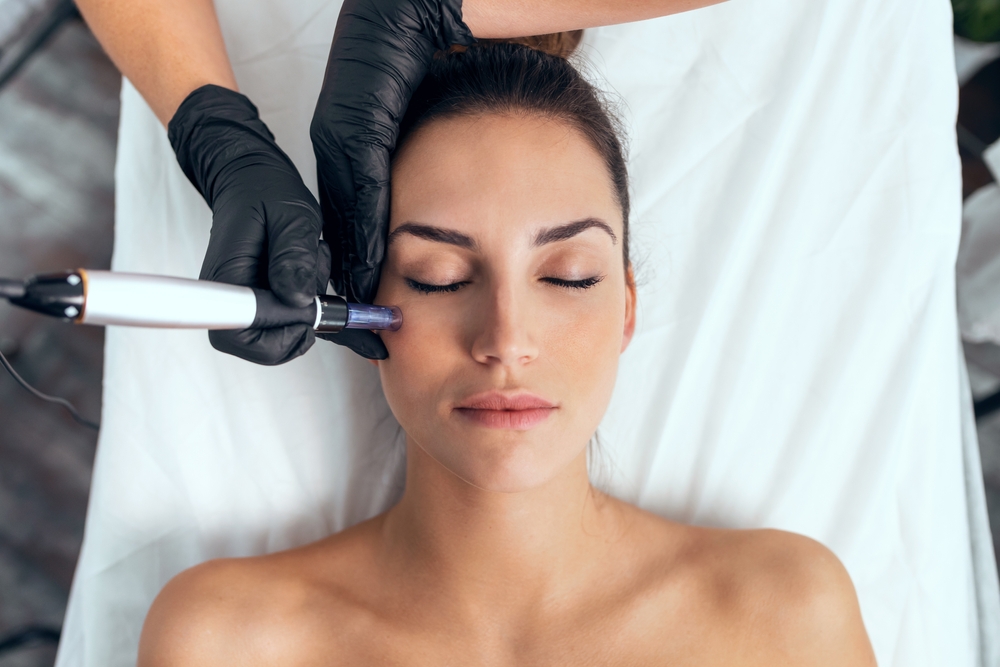Scarring is a common occurrence that leaves lasting marks from acne, injuries, or surgical procedures. While scars are a natural part of the healing process, they can impact self-image. Microneedling is a treatment option for reducing the appearance of scars and improving skin texture. Understanding how microneedling works and what to expect can help you make an informed decision about whether this treatment aligns with your skin goals.
What Is Microneedling?
Microneedling is a cosmetic procedure that uses a device containing fine needles to create tiny punctures in the skin’s surface. The device contains needles ranging in length from 0.5 to 2 millimeters and penetrates the skin at specific depths depending on the treatment area and skin condition being addressed. Microneedling stimulates the production of collagen and elastin. This contributes to the improvement of skin quality and the reduction of scar appearance.
How Does It Work?
Microneedling functions by creating controlled micro-injuries that trigger the skin’s wound healing cascade. When the needles penetrate the skin, they activate the cells responsible for producing collagen and elastin. This stimulation leads to increased production of these structural proteins over several weeks following treatment.
The depth of needle penetration determines treatment intensity and results. Deeper penetration reaches the dermis, where most scarring occurs, while superficial treatments target surface irregularities. The controlled nature of the injury allows for predictable healing without the extensive downtime associated with other procedures.
What Does the Process Involve?
A session begins with thorough skin cleansing and the application of a topical anesthetic. Once the skin is prepared, the practitioner selects the appropriate needle depth based on the type of scar and the skin’s thickness. The microneedling device is moved systematically across the treatment area in multiple directions, with the practitioner applying consistent pressure to provide coverage for all scarred areas. Following the procedure, the healing process begins, with results appearing gradually.
What Are the Benefits?
Microneedling offers several advantages for scar treatment. The procedure stimulates natural collagen production, which gradually improves skin texture and reduces scar depth over time. Microneedling can be safely performed on all skin types without risk of pigmentation changes.
The treatment addresses multiple skin concerns simultaneously, including fine lines, enlarged pores, and uneven skin tone. Recovery time is relatively minimal, with most patients returning to normal activities soon after the procedure. The gradual improvement allows for natural-looking results that continue to develop over several months.
How Does It Address Scarring?
Microneedling targets scarring through several mechanisms that address the underlying structural changes in scarred tissue. Scars form when normal skin architecture is disrupted and replaced with fibrous tissue that lacks the organization of healthy skin. The micro-injuries created during treatment break down this rigid scar tissue and promote the formation of new, more organized collagen fibers.
For acne scars, microneedling may be effective on rolling scars and shallow boxcar scars. The treatment helps level depressed areas by stimulating collagen production beneath the scar. Atrophic scars, which appear as indentations in the skin, may respond well to the collagen-building effects of microneedling.
The treatment also improves scar pigmentation by promoting cellular turnover and evening out the distribution of melanin. Post-inflammatory hyperpigmentation typically fades gradually as new skin cells replace the damaged ones. Results may become visible 3 to 6 months after treatment.
Know What To Expect
Microneedling is a practical approach to scar improvement that works with your skin’s natural healing processes. Success depends on proper patient selection, realistic expectations, and adherence to post-treatment care protocols. Schedule a consultation today to determine if microneedling is appropriate for your scarring concerns.



